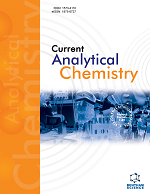
Full text loading...

Mass Spectrometry Imaging (MSI) is a label-free analytical technique that enables spatially resolved molecular profiling of biomolecules in tissue sections. By simultaneously mapping proteins, lipids, and metabolites, MSI has significantly advanced cancer research by revealing tumor heterogeneity, metabolic reprogramming, and drug distribution patterns—key factors in precision oncology.
This review is based on a comprehensive literature survey using databases such as PubMed, Scopus, and Web of Science. Studies were selected based on their relevance to recent innovations in MSI, particularly within cancer research and translational applications. Foundational landmark studies were also included to provide historical context and technological evolution.
Significant technological progress has been made in Matrix-Assisted Laser Desorption/Ionization (MALDI) and Desorption Electrospray Ionization (DESI), including the development of MALDI-2 post-ionization and improvements in ambient DESI. These advancements have enhanced spatial resolution (to sub-10 µm), sensitivity, and molecular coverage. MSI applications have enabled high-resolution mapping of tumor microenvironments, drug localization, and discovery of spatially defined biomarkers. Additionally, integrative MSI approaches support multi-omic profiling, which aids in cancer subtype classification and provides insights into drug resistance and metabolic vulnerabilities.
MALDI and DESI offer complementary advantages. MALDI excels in proteomic and biomarker studies with high spatial fidelity, while DESI operates under ambient conditions and is ideal for lipidomics and in situ drug mapping. The integration of MSI with other spatial omics platforms and data-driven techniques has enhanced its utility in understanding tumor biology and therapeutic outcomes.
MSI is poised to become a cornerstone of precision oncology and spatial biology. While challenges remain in standardization, data complexity, and clinical adoption, continued advances in instrumentation, ambient ionization, and artificial intelligence–assisted data analysis are accelerating its translational impact. Ongoing innovations promise to bridge the gap between experimental cancer research and routine clinical applications.

Article metrics loading...

Full text loading...
References


Data & Media loading...